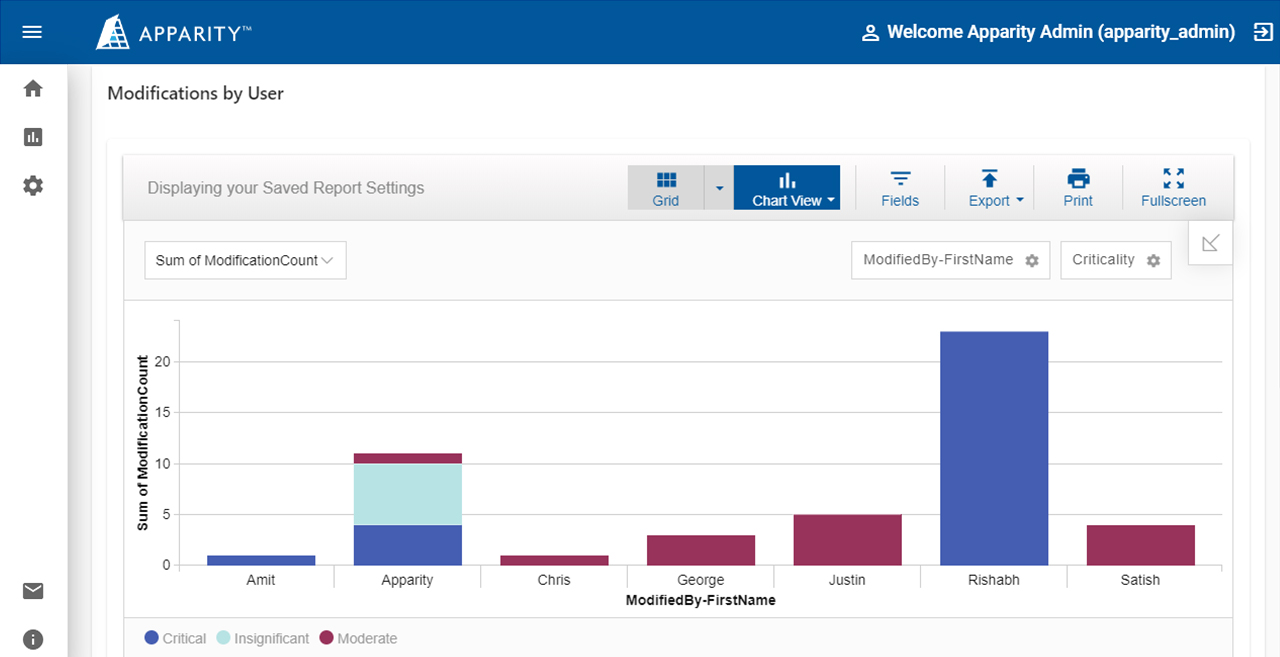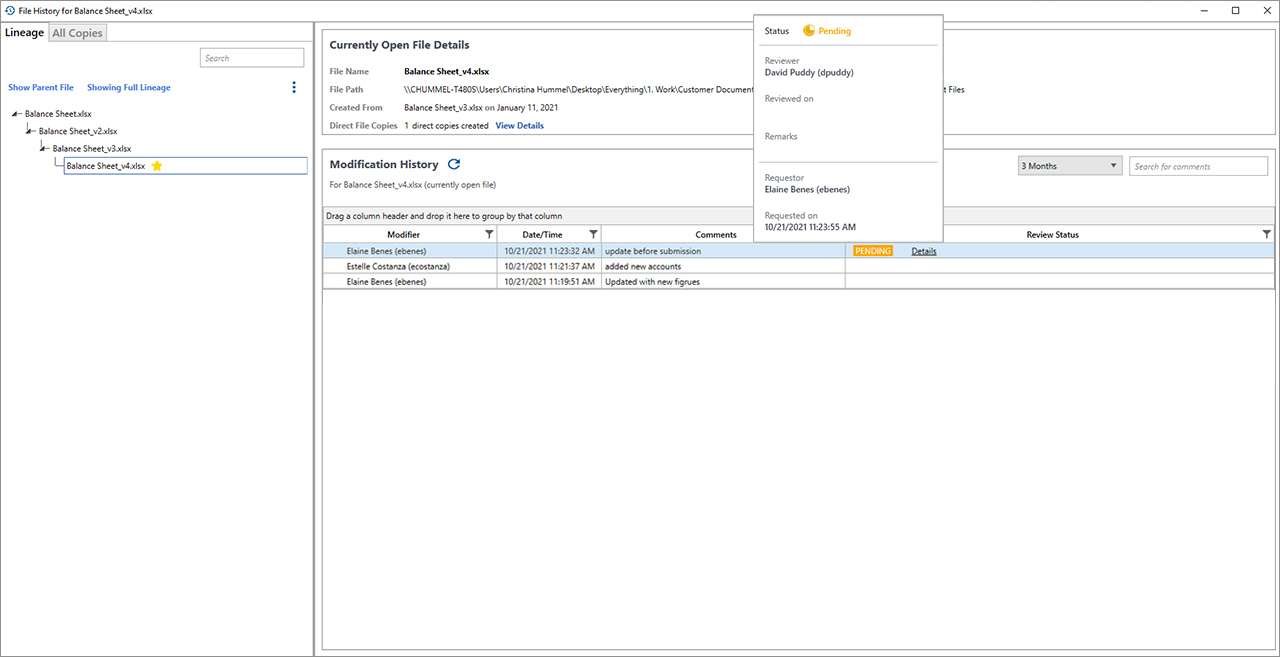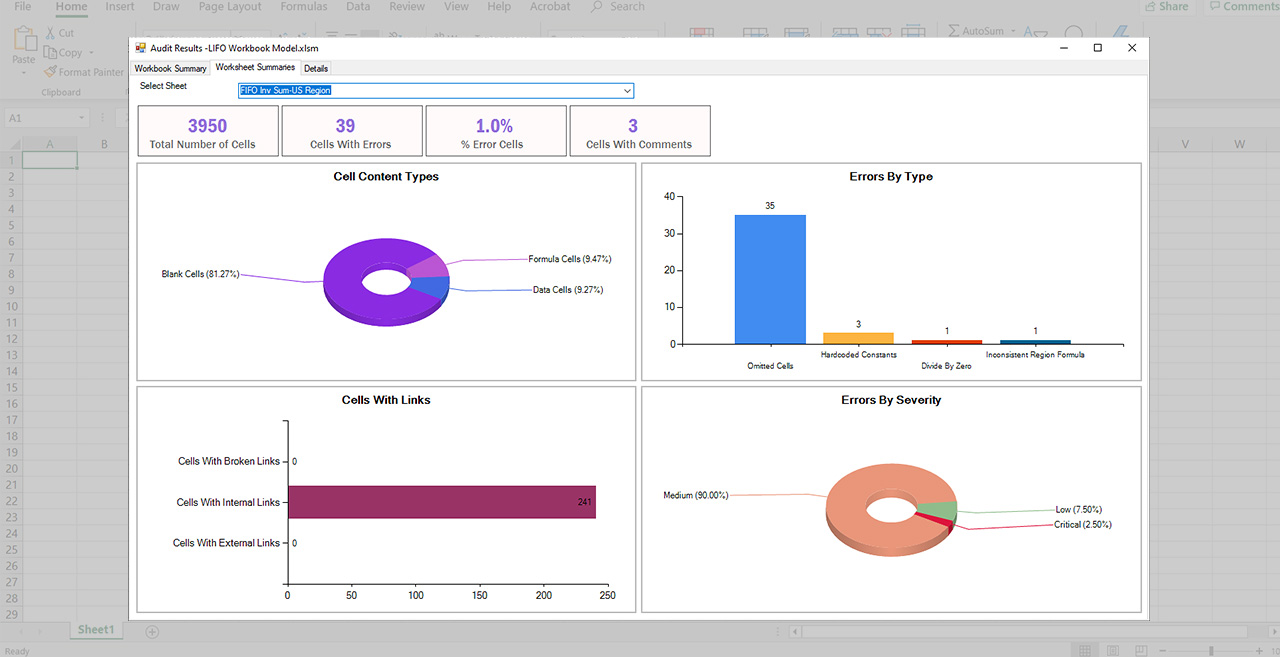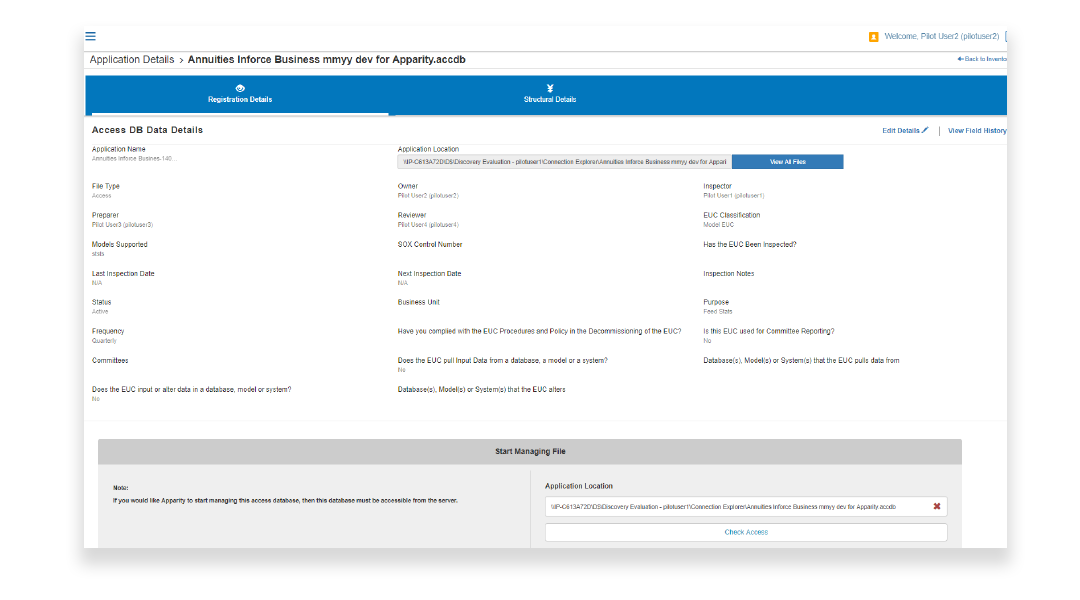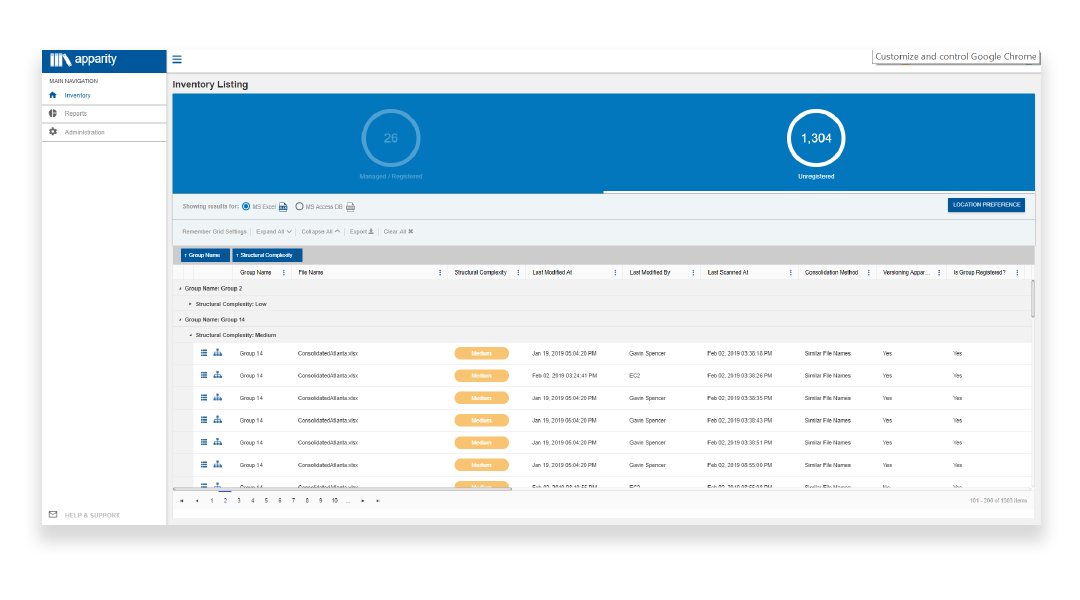Active Management Module
Apparity’s Active Management module provides comprehensive end user computing (EUC) controls and centralized reporting.
EUC Controls
Organizations need a reliable tool to control the inherent risk associated with spreadsheets and other EUCs. More importantly, this tool should help users increase productivity with their daily tasks. Apparity fulfills this need with the Active Management module.
Active Management is designed for high risk EUCs that require additional controls. Once an EUC is placed under Active Management, a detailed version history of the file is recorded, capturing all significant changes that take place. These changes can then be submitted to an approver through an automated change approval workflow.
Active Management can be deployed independently or works seamlessly with Registration and Discovery modules.
Change Management Control
Apparity works behind the scenes to capture all changes that are made to a spreadsheet. Integrated seamlessly with version and access control functionality, Apparity provides the ability to compare any two versions of a spreadsheet to immediately see what changes have been made to the spreadsheet and who made them.
Apparity’s ‘filter noise’ functionality is combined with company-specific change log configuration to ensure users focus their review on significant spreadsheet changes, as defined by company policy.
Out-of-the-box workflow cycles based on company policy and roles/responsibilities allow users to collaborate on key file changes and provide sign-off that changes have been reviewed and approved, if necessary.
Reporting Insights
The Apparity Reporting Insights Dashboard gives detailed reports through an intuitive web interface. Managers, compliance teams, and auditors can access real-time information about the files. This includes controls relating to access, version control and change management.
Excel Version History Tools
Excel Version History is a powerful feature within the Active Management module. In addition to review workflows, it provides a number of useful tools for end users. It automatically captures standard change data (date, time, user information) and also allows users to log comments/notes for each modification.
Additionally, the Version History can be easily exported for reporting, evidence and distribution, and can rollback to previous versions in case there’s an error. Lastly, Version History gives the users the ability to perform an “in-session compare,” so that they can easily compare other versions of the file within their Excel session.
Integrity Check
Active Management also includes a tool to identify errors within a spreadsheet. Integrity Check finds Excel errors in the file (like null values, cell errors, inconsistent formulas, etc.) and provides a clear breakdown that allows users to correct mistakes.
Central EUC Inventory
With other risk management software, inventory management is a siloed function in which discovery data has to be manually imported into inventory. Unlike competitors, Apparity Inventory Management System (AIMS) is integrated into our entire product suite and provides the ability to manage all your spreadsheet and EUC inventory regardless of stage (discovered, registered, managed).
Managed Inventory
The Managed/ Registered Inventory consists of all files that are registered and those that are placed under management for more surveillance. As a first step, Registration allows an organization to document certain file properties for EUC inventory. If more controls are necessary, files can be placed in Active Management to enable change management and versioning controls. The Managed/Registered Inventory is designed to help organizations effectively manage their critical files from one location.
Unregistered Inventory
The Unregistered Inventory includes all of the files that were identified from Discovery scans. When files appear to be versions of the same application, Apparity will algorithmically group them together. AIMS also allows users to group and filter the EUC inventory to view records in a contextual and meaningful way.



